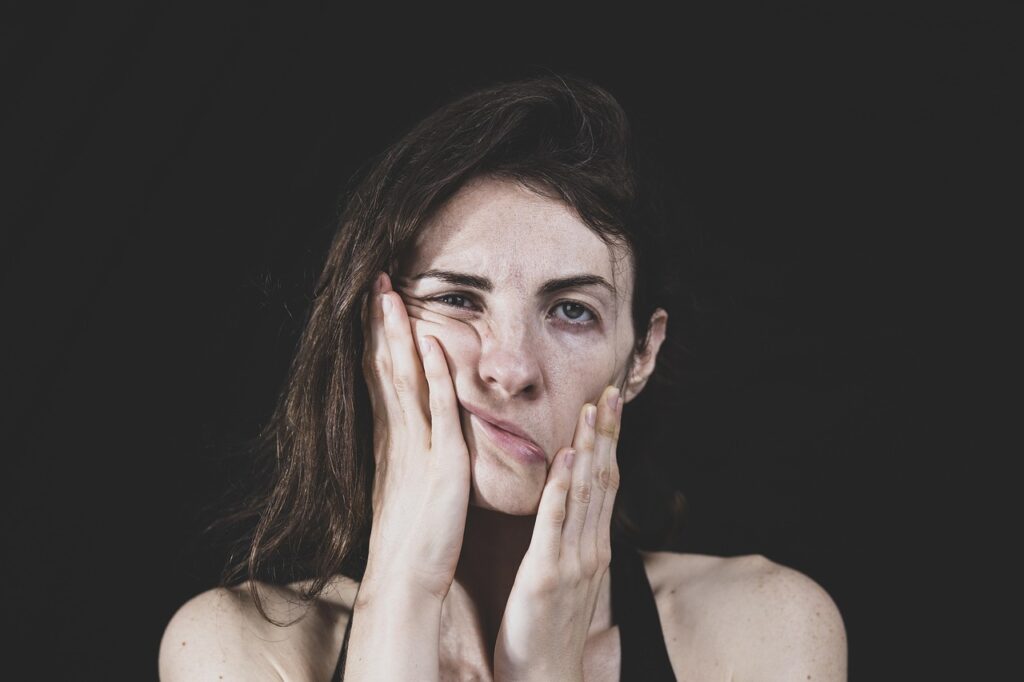You are stronger than your anxiety—this moment will pass, and you will rise.
At AskDoctor.ai, we’ve created this content to provide you with valuable knowledge about anxiety its symptoms, causes, treatment, and to share real stories conditions from people who live with it daily. Our goal is to offer both information and inspiration and help you understand this condition while giving you hope and practical insights on managing and coping with it. You’re not alone, and through knowledge and communication, we believe you can navigate this journey with confidence.
What is Anxiety? Understanding the Basics and Why It Happens
Anxiety is a natural stress response, but when it becomes overwhelming, it can interfere with daily life. It’s that uneasy feeling of worry, fear, or nervousness that arises in uncertain situations. While occasional anxiety is normal, persistent and intense anxiety may indicate an anxiety disorder. It stems from a combination of factors, including brain chemistry, life experiences, and even genetics. Whether it’s triggered by stress, trauma, or an overactive mind, understanding anxiety is the first step toward managing it. Understanding anxiety is the first step to managing it. In this guide, we’ll break down the basics of anxiety, its causes, symptoms, treatment, and success stories to come out from anxiety, and how you can regain control over your thoughts and emotions. You’re not alone, with coping & knowledge we can navigate this journey toward calm and confidence.
Symptoms of Anxiety? Signs You Shouldn’t Ignore
Anxiety is more than just feeling worried or uneasy. Everyone experiences anxiety differently. Let’s explore the common symptoms of anxiety:
Physical Symptoms
- Shortness of Breath – Anxiety can make breathing feel shallow, tight, or labored. This condition happens because your body goes into “fight or flight” mode. It feels like you can’t take a deep breath or get enough air. It’s usually harmless but can make you feel lightheaded, dizzy, or even more anxious.
- Dizziness or Lightheadedness – Feeling unsteady or faint is common, especially during anxiety attacks. A sensation of unsteadiness or feeling off-balance. It is a feeling of floating or like your head is spinning and you might faint or lose control
- Muscle Tension – Constant worry can cause tightness in your shoulders, neck, or jaw. This tension can reduce blood flow to the brain, leading to dizziness or a feeling of heaviness in the head.
- Trembling or Shaking – Your hands, legs, or entire body may shake during moments of high anxiety.
- Frequent Headaches – Tension headaches or migraines can be triggered by chronic anxiety.
- Fatigue or Weakness – Constant anxiety can drain your energy, leaving you physically and mentally exhausted.
Emotional & Psychological Symptoms:
- Excessive Worry – Constant overthinking or imagining worst-case scenarios.
- Feeling Restless or On Edge – A sense of nervousness or inability to relax.
- Irritability – Small things may annoy or frustrate you more than usual.
- Difficulty Concentrating – Anxiety can make it hard to focus, leading to forgetfulness.
Behavioral Symptoms:
- Avoidance – Staying away from people, places, or situations that trigger anxiety.
- Compulsive Behaviors – Repeating certain actions (like checking things multiple times) to ease anxiety.
- Trouble Sleeping (Insomnia) – Difficulty falling asleep, waking up frequently, or having restless sleep.
- Fidgeting or Nail-Biting – Small repetitive movements as a way to cope with nervousness.
Causes of Anxiety? The Science Behind Stress and Worry
Anxiety disorders affect millions of people worldwide, and their causes can vary from person to person. While some individuals may develop anxiety due to environmental factors, others may experience it due to biological or psychological reasons. Anxiety can be caused by a variety of factors, including:
Genetics Factors:
Research suggests that anxiety can be inherited. Individuals with a family history of anxiety disorders are more likely to develop anxiety themselves. Certain genes related to brain function and neurotransmitter regulation can make a person more prone to excessive worry and fear. However, genetics alone do not determine whether someone will develop an anxiety disorder; environmental and lifestyle factors also play a role.
- Stressful Life Events:
Experiencing stressful or traumatic events can trigger anxiety. Individuals who experience traumatic events may develop chronic anxiety, especially if they do not have adequate coping mechanisms. Here, we will discuss those triggers and moments that cause anxiety.
- Losing a loved one
- Divorce or relationship problems
- Financial difficulties
- Job loss or workplace stress
- Physical or emotional abuse
- Medical Conditions:
Certain health conditions can cause or worsen anxiety. Additionally, chronic pain, respiratory disorders, and other medical conditions can contribute to increased feelings of anxiety. Here we discussed certain health conditions:
- Heart disease – Irregular heart rhythms and other heart-related problems can create symptoms similar to panic attacks.
- Thyroid disorders – An overactive thyroid (hyperthyroidism) can lead to excessive nervousness and restlessness.
- Diabetes – Fluctuations in blood sugar levels can trigger anxiety-like symptoms.
- Panic Attack Symptoms (Severe Anxiety Episodes)
Panic attacks are intense episodes of anxiety that peak within minutes. Symptoms include:
- Rapid heartbeat or chest pain
- Shortness of breath or choking sensation
- Dizziness, nausea, or sweating
- Tingling or numbness in hands and feet
- A feeling of detachment from reality (derealization)
- Fear of dying or losing control
Diagnosis Criteria for Anxiety
Anxiety disorders are diagnosed based on specific criteria outlined in standardized mental health guidelines such as the Diagnostic and Statistical Manual of Mental Disorders (DSM-5) and the International Classification of Diseases (ICD-11). These criteria help differentiate normal stress responses from clinically significant anxiety that affects daily life. Diagnosis typically involves assessing persistent excessive worry, physical symptoms such as restlessness or rapid heartbeat, and functional impairment. Mental health professionals use structured interviews, self-report questionnaires, and behavioral observations to confirm an anxiety disorder diagnosis and formulate an appropriate treatment plan. Below, we discuss some steps involved in diagnosing anxiety:
Types of Anxiety Disorders and Their Diagnosis
- Generalized Anxiety Disorder (GAD)
- Persistent and excessive worry about multiple aspects of life.
- Symptoms occur most days for at least six months.
- Physical symptoms such as muscle tension, fatigue, and sleep disturbances.
- Panic Disorder
- Recurrent panic attacks involving sudden, intense fear and physical symptoms.
- Panic attacks may include heart palpitations, shortness of breath, dizziness, and a feeling of losing control.
- Persistent concern about having more panic attacks.
- Social Anxiety Disorder (Social Phobia)
- Intense fear of social situations due to fear of embarrassment or judgment.
- Avoidance of social interactions or extreme distress when facing them.
- Specific Phobias
- Intense fear or anxiety about a specific object or situation (e.g., heights, flying, animals).
- The fear is disproportionate to the actual danger and leads to avoidance behavior.
- Separation Anxiety Disorder
- Excessive fear of being separated from attachment figures.
- More common in children but can occur in adults.
Treatment of Anxiety: Medication Vs Therapy
Anxiety disorders can be effectively treated using a combination of therapy, medication, lifestyle modifications, and holistic approaches. Anxiety disorders are highly treatable conditions, and various effective approaches can help individuals manage symptoms and improve their quality of life. Additionally, lifestyle modifications, including regular exercise, healthy eating, mindfulness, and relaxation techniques, can significantly reduce anxiety levels. A personalized treatment plan, tailored to an individual’s needs, ensures long-term success in managing anxiety symptoms. Here we simply discussed the basic treatments for anxiety:
Lifestyle Changes
- Regular Exercise: Physical activity releases endorphins and reduces stress.
- Healthy Diet: Avoiding caffeine, alcohol, and processed foods can improve anxiety symptoms.
- Adequate Sleep: Poor sleep can worsen anxiety, so maintaining a consistent sleep routine is crucial.
Physical symptoms treatment (Dizziness, and stomach issues)
- Practice Deep Breathing: Slowly inhale through your nose for 4 seconds, hold for 4 seconds, and exhale through your mouth for 6 seconds.
- Stay Hydrated: Drink plenty of water to prevent dehydration.
- Eat Regularly: Low blood sugar can worsen dizziness, so eat small meals throughout the day.
- Relax Your Muscles: Try progressive muscle relaxation to relieve tension.
- Grounding Techniques: Focus on your surroundings, touch a textured object, or count things around you to stay present.
Anxiety Treatment: Medication VS Therapy (Which One is Best for You)

Real-Life Success Stories for Anxiety
Anxiety can be overwhelming, affecting a person’s daily life, relationships, and overall well-being. However, with the right support and treatment, many individuals have successfully managed and even overcome their anxiety. Real-life success stories serve as powerful reminders that recovery is possible, offering hope and encouragement to those struggling with similar challenges. These real-life stories highlight individuals who have faced severe anxiety but found ways to regain control of their lives. By exploring these success stories, we can better understand the importance of seeking help, trying different coping mechanisms, and staying committed to recovery. No matter how difficult anxiety may seem, these real-life experiences prove that improvement is possible and that small steps can lead to significant progress.
Kaylee’s Journey Against Anxiety
Shaan interviews Kaylee and dives deep into her journey and her recovery from Anxiety. In this video, they discuss the terrible physical symptoms Kaylee experienced, her frustrations with the medical community providing help with this specific problem, and Kaylee’s ultimate liberation from anxiety and going back to living freely.
Belle Healed her Anxiety with Determination: Dare Success Story
A mother of three battling anxiety was no easy task for Belle Nunes. Belle struggled with both health and generalized anxiety for six to seven years. She was on medication and would take it for instant gratification if she had to fulfill a mom’s duty, such as taking her daughter to a softball game. Belle is off her medication completely and says she hasn’t been anxious in two years.
Mat`s Success Journey Get Rid of Anxiety
Joyce’s Success Journey: She Gets Angry — And Gets Better!
Listen to Joyce describe her journey from being frozen in fear on her sofa to being back at work and feeling limitless. Particular note is the way Joyce used anger and frustration to fuel her recovery efforts. For many, this can be an excellent strategy and we appreciate Joyce being so open and honest about how she was feeling and how it helped to propel her forward.
The Anxiety Guy: How Famous YouTuber Fought with Anxiety
His anxiety story can also be attributed to an anxiety success story. The reason is, that he learned plenty as he recapped the health anxiety experiences, he went through which led him to tap into the anxiety recovery path once and for all.
Final Thoughts: Turning Anxiety into Strength and Growth
Anxiety can feel overwhelming; however, it doesn’t have to control your life. Although it presents challenges, it can also catalyze personal growth, resilience, and self-discovery. In fact, many people who have struggled with anxiety have ultimately learned to transform their fears into strengths. By doing so, they use their experiences to develop greater emotional awareness, problem-solving skills, and inner confidence.
Moreover, the key to turning anxiety into strength lies in understanding and managing it effectively. Through therapy, mindfulness, and self-care, individuals can reframe anxious thoughts into opportunities for growth. Instead of avoiding difficult situations, confronting them with courage, in turn, helps build resilience. Furthermore, techniques such as Cognitive-Behavioral Therapy (CBT), meditation, and journaling allow people to challenge negative thinking patterns and, consequently, gain a deeper understanding of their emotions.
Closed With
Anxiety can lead to increased empathy and connection with others. Those who have faced anxiety often become more compassionate and supportive, using their experiences to help others who are struggling. This transformation fosters meaningful relationships and a sense of purpose.
It’s important to remember that progress takes time, and setbacks are part of the journey. By embracing small victories and practicing self-compassion, individuals can gradually shift their perspective from fear to empowerment. Rather than viewing anxiety as a weakness, it can be seen as a motivator for self-improvement and a reminder of inner strength.
Ultimately, anxiety is not the end of the story—it can be the beginning of a more resilient, self-aware, and empowered version of yourself. By learning to navigate it with patience and persistence, you can turn anxiety into a tool for personal growth and a pathway to a fulfilling life.

Image by Engin Akyurt from Pixabay
References:
National Institute of Mental Health about Panic Attacks
World Health Organization about Panic Attacks
Harvard Health about Panic Attacks






Leave a Reply